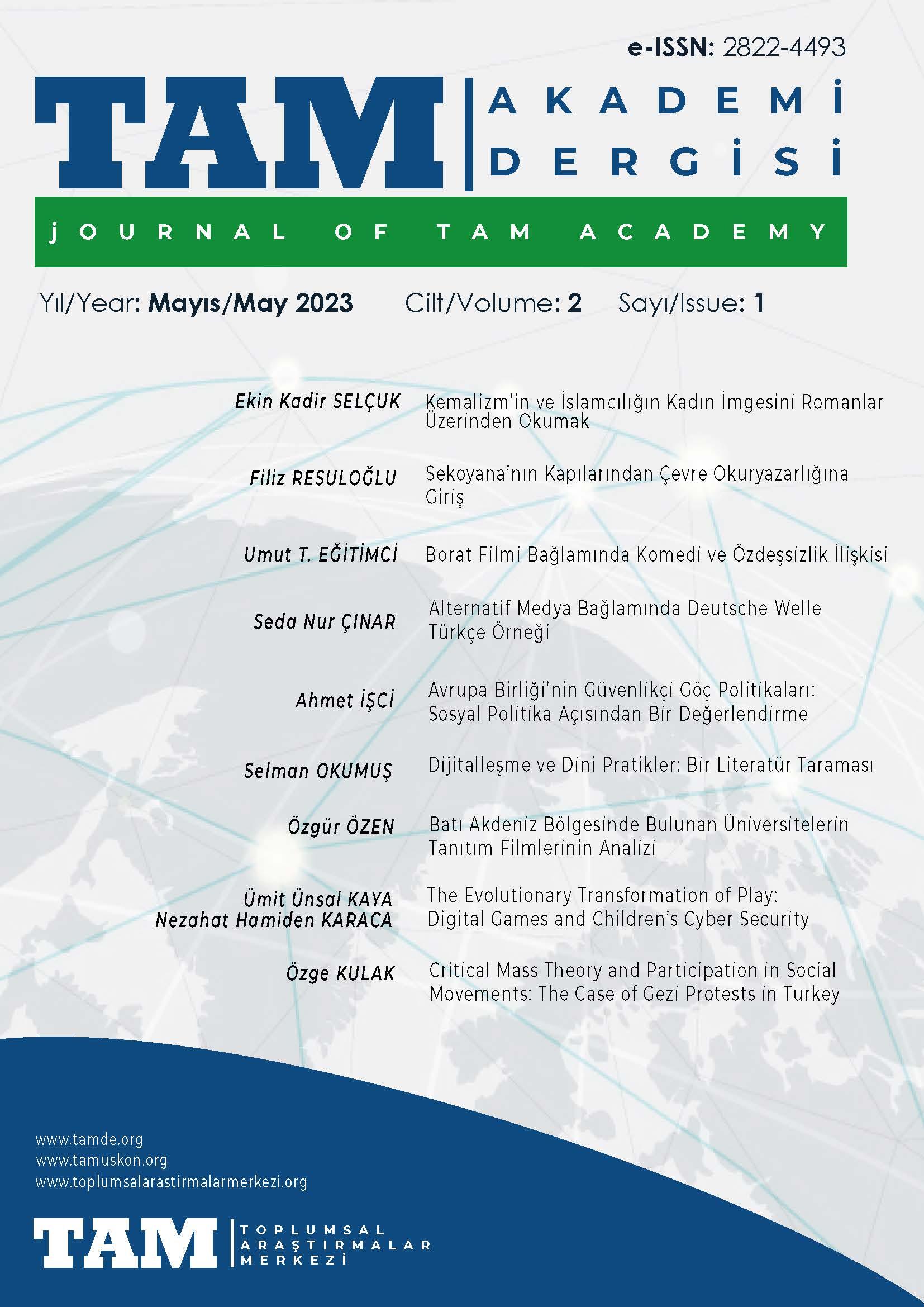Özet
The meeting organized in Gezi Park on May 27th, 2013 to protest the construction of a mall in the historical park has turned into a nationwide collective movement with a gradual increase in the number of participants from different ages, classes, and political backgrounds in an era in which the young were claimed to be apolitical in comparison to the 1968 generation of Turkey. The phenomenon did not only draw the attention of the international press and news during those times but also turned into an outstanding and popular topic for academic studies. Therefore, there are several publications analyzing the Gezi Uprising and the profile, psychology, and motivation of Gezi participants. Using critical mass theory to analyze the data collected through literature review, this study examines the collective action and interdependence of the heterogeneous participant profiles with different motivations in order to understand how the Gezi protests of 2013 emerged as the largest social movement of Turkish political and social history. This study does not aim to fully answer why there are no large-scale demonstrations despite the rate of discontent in today’s Turkey being much higher than that of 2013; however, critical mass theory certainly provides sufficient background to interpret participation in social movements en masse in the post-Cold War era when there is no political leader and organization leading the uprisings.
Referanslar
Akpınar, T. [@TaylanAkpınar]. (2016, May 31). Hasta Siempre - Comandante Che Guevara (Gezi Parkı Direnişi) [Video]. Youtube. https://www.youtube.com/watch?v=yJbyJh18BCs.
Bayat, A. (2017). Revolutions without Revolutionaries: Making Sense of the Arab Spring. Stanford University Press.
Baysu, G. (2017, April). Gezi Protestolarına Katılanların Politik Profilleri ve Demokratik Tutumları/ Political Profiles and Democratic Attitudes of the Participants in the Gezi Protests. Türk Psikoloji Yazıları, 20(1), 78-91.
Constitution of the Republic of Turkey, 7 November 1982, https://www.refworld.org/docid/3ae6b5be0.html.
Eken, B. (2014). The Politics of the Gezi Parkı Resistance: Against Memory and Identity. South Atlantic Quarterly, 113(2), 427-436.
Erdoğan, E. (2015). Siyasal Psikoloji Siyasal Katılım Hakkında Ne Öğretebilir? Gezi Protestoları'na Katılanlar Üzerinden Bir Değerlendirme/ What Can Political Psychology Teach About Political Participation? An Evaluation of Participants in the Gezi Protests. Marmara Üniversitesi Siyasal Bilimler Dergisi, 3(1), 31-58.
European Union: European Parliament, European Parliament Resolution on the Situation in Turkey, 13 June 2013, RC-B7-0305/2013, https://www.europarl.europa.eu/doceo/document/TA-7-2013-0277_EN.html
Kurzman, C. (2005). The Unthinkable Revolution in Iran. Harvard University Press.
Macy, M.W. (1990). Learning Theory and the Logic of Critical Mass. American Sociological Review, 55(6), 809–826.
Marwell, G. & Oliver, P. (1993). The Critical Mass Theory in Collective Action: A Micro-Social Theory. Cambridge University Press.
Marwell, G., Oliver, P. E., & Prahl, R. (1988, November). Social Networks and Collective Action: A Theory of the Critical Mass. III. American Journal of Sociology, 94(3), 502-534.
Ökten, A. N., Kurtarır, E., & İnal Çekiç, T. (2013). Katılımın Yokluğunda Gezi'de Direniş / Gezi Resistance in the Absence of Participation. Tmmob Şehir Plancıları Odası, 23(1), 45-51.
Oliver, P. (2013). Critical mass theory. In D. A. Snow, D. D. Porta, B. Klandermans, & D. McAdam (Eds.), TheWiley-Blackwell Encyclopedia of Social and Political Movements (pp. 285-289). New Jersey: Willey-Blackwell.
Oliver, P., Marwell, G., & Teixeira, R. (1985, November). A Theory of the Critical Mass. I. Interdependence, Group Heterogeneity, and the Production of Collective Action. American Journal of Sociology, 91(3), 522-556.
Sallan Gül, S., Sezer, M., & Kahya Nizam, Ö. (2015). Eylemcilerin Gözünden Bir Sosyal Hareket ve Kent Hakkı Talebi Olarak Taksim Gezi Parkı Eylemleri/ Taksim Gezi Park Protests as a Social Movement and a Demand for the Right to the City through the Eyes of Activists. Süleyman Demirel Üniversitesi Sosyal Bilimler Enstitüsü Dergisi, 2(22), 1-28.
Viynis. (2014, January 25). Grup Yorum - Çav Bella (GEZİ PARKI) [Video]. Youtube. https://www.youtube.com/watch?v=yIc6SymJYKs
Yörük, E. (2014). The Long Summer of Turkey: The Gezi Uprising and its Historical Roots. South Atlantic Quarterly, 113(2), 419-426.

Bu çalışma Creative Commons Attribution-NonCommercial-ShareAlike 4.0 International License ile lisanslanmıtır.
Telif Hakkı (c) 2023 TAM Akademi Dergisi





